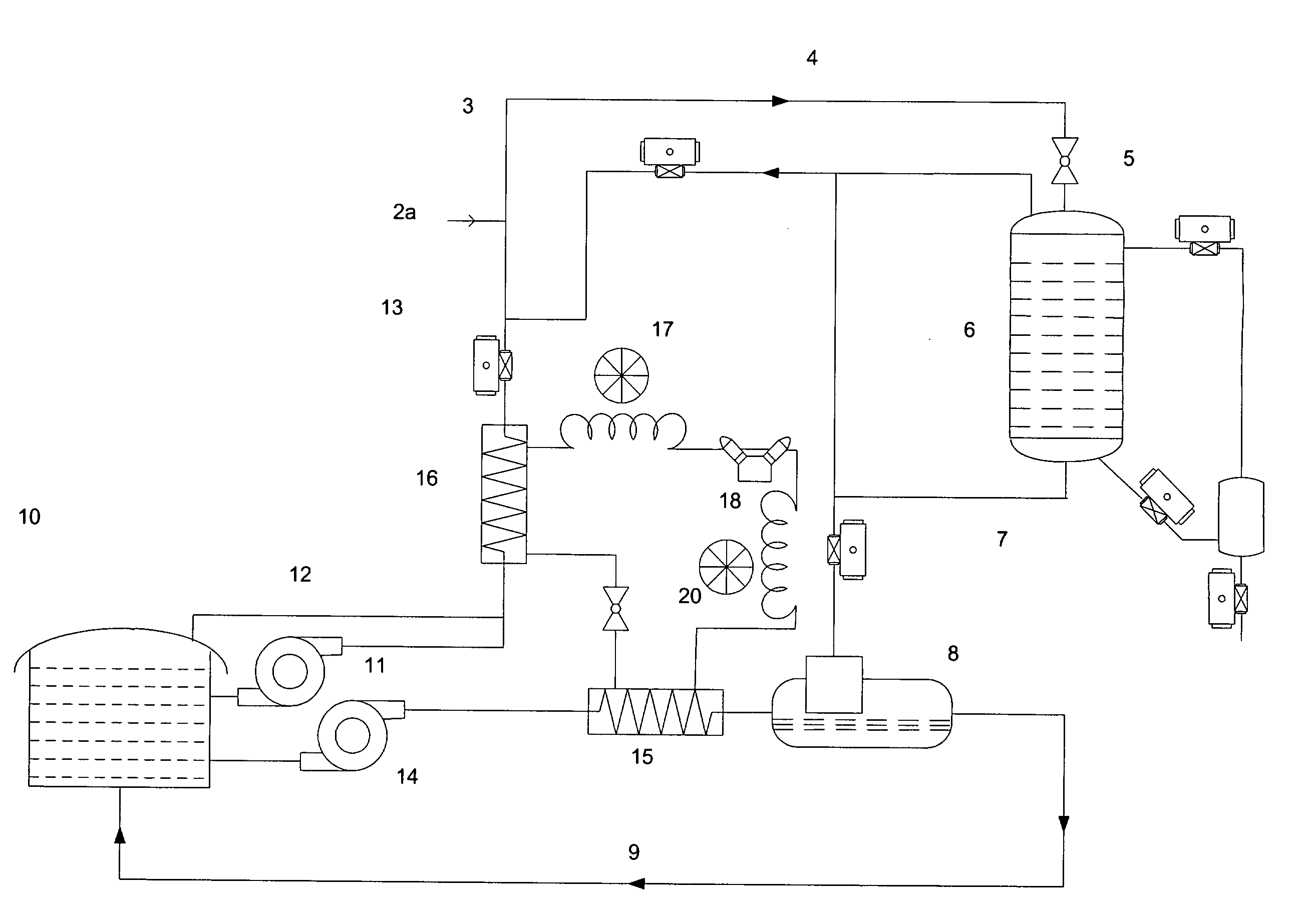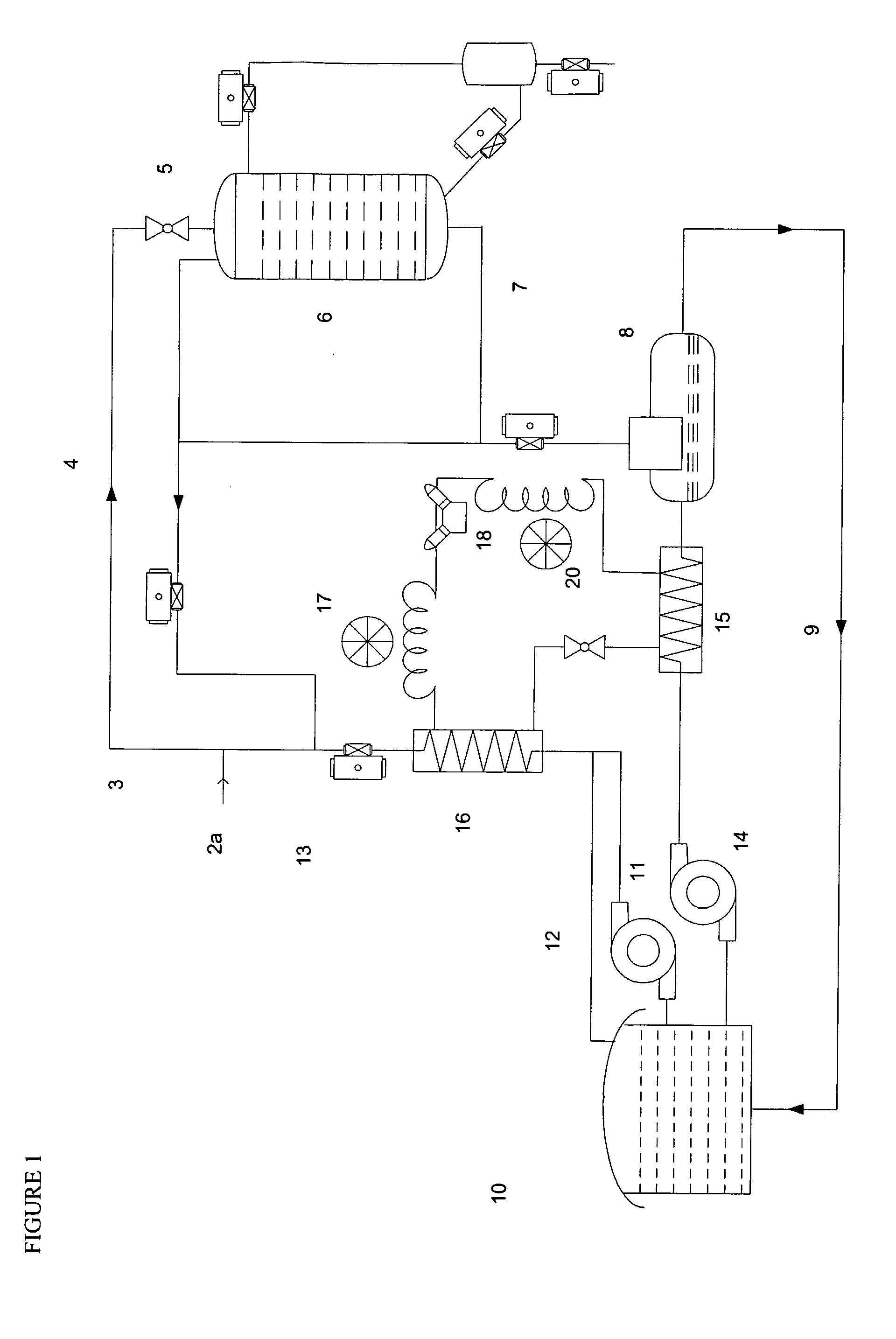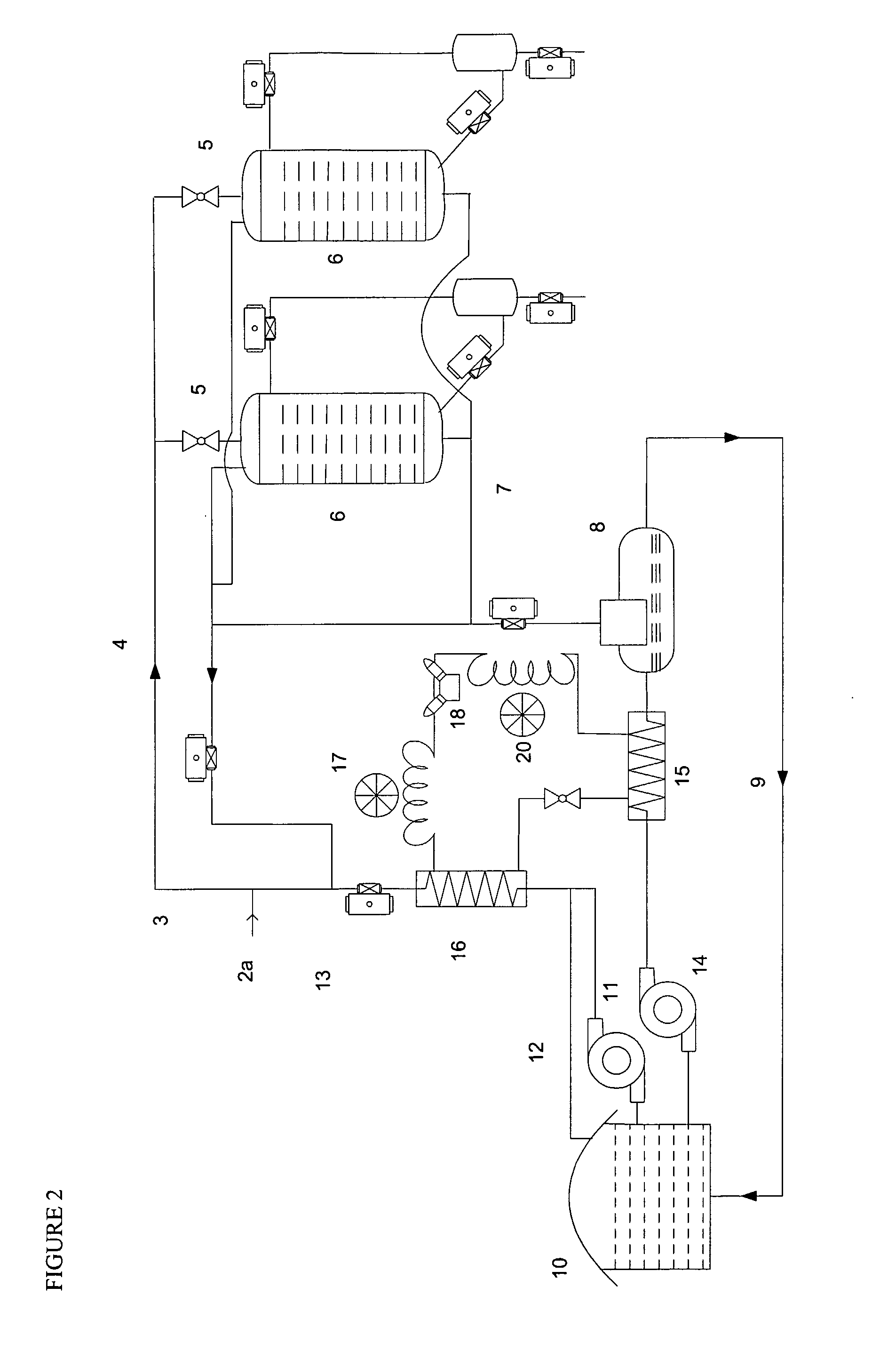Impregnation apparatus and method
- Summary
- Abstract
- Description
- Claims
- Application Information
AI Technical Summary
Benefits of technology
Problems solved by technology
Method used
Image
Examples
example 1
[0085]An apparatus according to FIG. 1 was used. 3.44 kg of liquid R 22 at a temperature of 40° C. and 1400 KPa was mixed with 100 g of copper naphthenate (introduced as an 8% solution in a light hydrocarbon mixture). This solution was pumped into treatment vessel, an autoclave, containing 0.926 kg of radiata pine. The solvents and active and radiata pine are maintained in contact at 1400 KPa for 15 mins. Liquid solvent was then drained off leaving a saturated vapour in the treatment chamber. The pressure was dropped to 100 KPa where upon the temperature of the solvents mixture reduced to −25° C. The remaining R22 solvent was then drawn from the treatment vessel into an entrainer maintained at a temperature of −25° C. Solvent exiting the entrainer was then passed to reservoir 10 for further use.
[0086]The dry radiata pine was weighed and it was determined that the increase in weight was 45 g. The amount of Copper impregnated into the timber, at 8% solution, is calculated to equal 0.3...
example 2
[0087]The procedures of example 1 were repeated but here the copper naphthenate solution was replaced by a solution being a mixture of 0.9% tri-butyltin naphthenate (TBTN) and 0.04% permethrin in liquid R22. Analysis of the impregnated timber indicate in excess of 0.08% TBTN and 0.02% permethrin in the cross-section.
[0088]In both examples, the end grain was sealed to minimise effects of solvent / active ingress via the end grain, to more properly model what would happen in larger pieces of wood.
[0089]A further extension of the apparatus includes using an additional treatment chamber attached in parallel as shown in FIG. 2. While the material in the first chamber is being impregnated, the second chamber can be isolated from the system, evacuated and vented to the atmosphere and then loaded with wood. When the impregnation in the first chamber is complete, the solvents are removed and the wood dried. While the final drying stage was taking place in the first chamber the solvent and acti...
PUM
 Login to View More
Login to View More Abstract
Description
Claims
Application Information
 Login to View More
Login to View More - R&D
- Intellectual Property
- Life Sciences
- Materials
- Tech Scout
- Unparalleled Data Quality
- Higher Quality Content
- 60% Fewer Hallucinations
Browse by: Latest US Patents, China's latest patents, Technical Efficacy Thesaurus, Application Domain, Technology Topic, Popular Technical Reports.
© 2025 PatSnap. All rights reserved.Legal|Privacy policy|Modern Slavery Act Transparency Statement|Sitemap|About US| Contact US: help@patsnap.com



